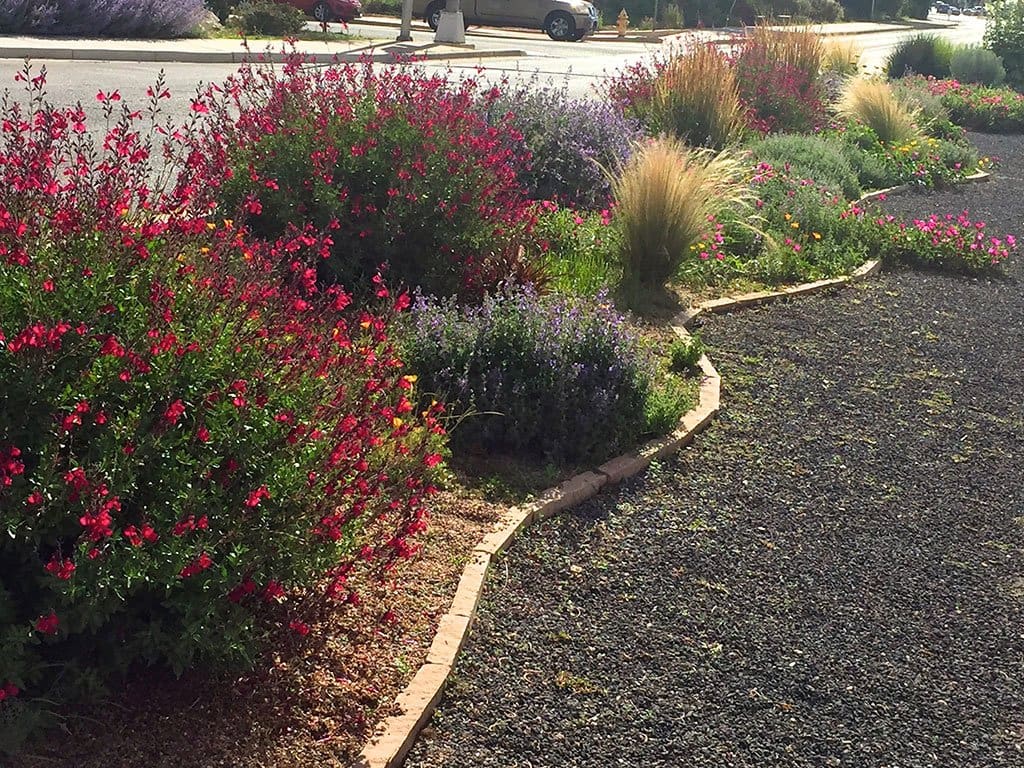
Xeriscaping in Santa Fe
Xeriscaping is a method of landscape design that not only makes gardening easier in dry climates because of the plants’ drought tolerance, but preserves nature’s resources by using less water while still providing a lush garden of native blooming flowers and foliage. Xeriscape gardening does not mean sacrificing a lush, beautiful and diverse landscape. Xeriscape gardens can look beautiful year round and require only minimal additional water, even in drought years. Xeriscape plants come in just about every size, texture, and flower color. When planning a xeriscape landscape in Santa Fe there are a few principles to keep in mind.
- Sacrifice the lawn. Instead, create a stone path, with xeric perennials and shrubs and grasses in groupings. If you must have turf, keep it to a small area, and install an efficient sprinkler system. Try native grasses or one of many other groundcovers. Examples include thyme, snow in summer, ice plant and African daisy.
- Plant trees to add shade and change the micro climate. Trees or tall hedges can be planted in rows or clumps to create windbreaks or alone to create shade to cool the soil and slow evaporation.
- Flagstone, crushed gravel, and mossrock boulders can be very creative and beautiful as patios, paths, and planting bed accents. Terraced beds with stone add depth and beauty to any setting. Shredded bark and compost can fill in empty spaces, protect the surrounding plants, and amend the soil. They create an earthy look.
- A small water feature such as a bubbling fountain or bird bath can create the feel of a desert oasis and uses much less very little water at all. Fountains re-circulate their water and loose only minimal amounts of water to evaporation. They are great for attracting wildlife.
- Utilize the zone system. Zone 1 can be a small oasis near the house that gets the most water, but also has the most impact.
- In zone 2, the transition zone, plant only plants that need minimal supplemental water.
- In zone 3, the outer yard, plant only completely native wildflowers, grasses and shrubs. Use boulders and rock borders if the area needs more substance.
- Install a drip irrigation system. Emitters can be directed to the base of each plant so that there is no waste or evaporation. The timer will make all of the difference. Watering in the night or early morning is essential in the summer.
- Harvest rain water from you gutters, and utilize berms and swales to guide rain water to the thirsty sections of you garden. Cisterns to harvest roof water are now required by law for new houses. Make sure that the plumbing and valves work correctly and use it whenever possible.
- Use container gardens for small but bold statements in color. Containers are not only for annuals, but look great with herbs, fruit trees, and even sages and cacti. They are a very efficient use of space and water.
- Vegetables can be grown with appropriate soil amendments and mulch, as well as land contouring. Herbs can grow in any soil and tolerate drought.
- Utilize architectural elements by building walls or fences around your garden area to protect it from harsh, drying wind and sun. Orient your garden so that the house protects it too. Portals, pergolas and trellises help immensely.






